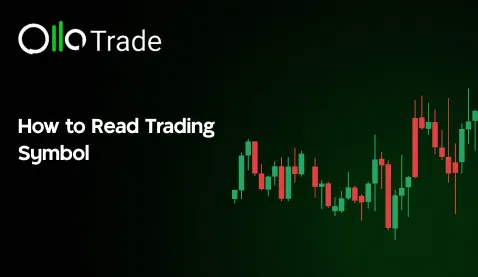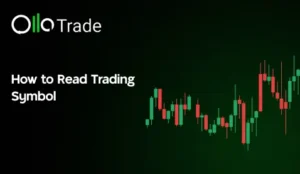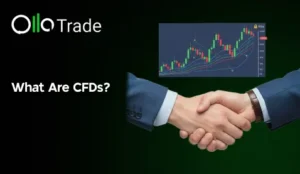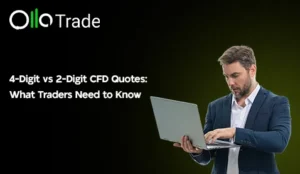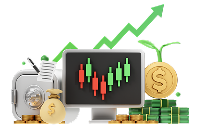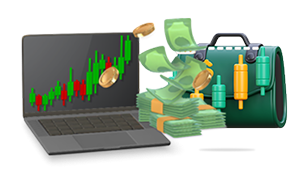Jumping into the world of trading is like learning a new language, and trading symbols are an important element of that vocabulary. Simply put, trading symbols are the short codes or nicknames for stocks, CFDs, and other financial assets you see on your screen. Think of them like the shorthand in a text message that traders use to keep things quick and simple.
For beginners, cracking the code behind these symbols is a game-changer. Understanding what those letters and numbers mean helps you navigate the market confidently, avoid costly mistakes, and make smarter decisions. Don’t worry by the end of this guide, you’ll be reading trading symbols like a pro, no sweat.
Trading Symbols Explained: What Are They and Why Do They Matter?
Trading symbols are like nicknames or shorthand codes for companies and financial instruments that everyone in the trading world uses to quickly identify them. They’re the secret handshake of the stock market that is short, simple, and packed with meaning. For example, Apple’s trading symbol is “AAPL,” which traders use instead of saying the whole company name every time they want to buy or sell its stock.
These symbols matter because they keep things neat and tidy, especially when millions of trades happen every day across stocks, CFDs, forex, and commodities. Beyond the stock market, they help traders and investors spot opportunities, track prices, and make smart moves without getting bogged down. Traders use them to talk shop with speed and ease.
How to Read Stock Symbols Without Getting Lost?
Diving into the world of stock trading can feel like decoding a secret language, but reading stock symbols doesn’t have to be rocket science. Here’s a friendly, step-by-step guide to cracking the code like a pro without getting lost in the jumble:
Know What You’re Looking At
Every stock you see on the market has a distinct “trading symbol” or ticker symbol. It’s usually 1 to 5 letters long and acts like a company nickname on the exchange. For example:
- AAPL stands for Apple Inc
- MSFT for Microsoft
- Here’s a quick head up: Three letters usually mean the stock is listed on the New York Stock Exchange (NYSE).
- Four or five letters typically point to the Nasdaq stock exchange.
- Sometimes, symbols ending with an “F” or “Y” might indicate foreign stocks.
So, spotting the length and letter pattern helps you immediately know where the stock is traded.
Understand the Letters and What They Suggest
The letters mainly represent the company’s name or brand, but sometimes extra characters tell a bit more about the stock’s type or class. For example:
- Letters like A, B, C after the main symbol show different share classes.
- Symbols with an “E” at the end might represent an ETF (Exchange Traded Fund).
It’s like reading between the lines, subtle tweaks to the name that mean something important to insiders.
Spotting the Numbers
While most stock symbols are letters-only, some indexes or markets include numbers in their symbols. Numbers often represent:
- Trading volume abbreviations (e.g., K = thousand, M = million), telling how many shares changed hands.
- Sometimes, a number at the end of a symbol marks a specific type of security.
Numbers are the breadcrumbs that guide you to the bigger story about that stock’s trading activity.
The Ultimate CFD Symbol Guide: What You Need to Know
Contracts for Difference, or CFDs, are a way to trade price movements of assets like stocks, commodities, or currencies without actually owning them. Basically it is like making a bet on whether the price of something will go up or down instead of buying the thing itself.
Unlike traditional stock symbols that represent ownership in a company, CFD symbols often reflect contracts tied to the price of those assets and can vary slightly based on the broker or market. For example: You might see CFDs for gold labeled as XAU/USD or for the S&P 500 index as SPX500.
To navigate CFD trading confidently, it’s like learning a new language. Start by knowing your symbols and remember to use tools like demo accounts to practice without risking your pocket. This way, you can crack the code of CFD symbols and trade smartly in this exciting market playground.
Decoding Trading Codes Like a Pro
Different markets come with their own unique systems of trading codes that might seem like a secret language at first. Whether you’re eyeing stocks, commodities, forex, or crypto, each market spells out its assets with distinct codes and symbols that serve as quick IDs on your trading screen. Here’s a simple comparison to get you started:
| Market | Typical Code Type | Example | Notes |
| Stocks | Ticker symbols | AAPL (Apple Inc.) | Usually 1-4 letters representing the company. |
| Commodities | Standardized codes | GC (Gold futures) | Often abbreviations reflecting the commodity. |
| Forex | Currency pairs | EUR/USD | Shows two currencies being traded. |
| Crypto | Coin symbols | BTC (Bitcoin) | Usually 3-5 letter abbrev. for cryptocurrencies. |
Once you crack these codes, you’ll read a ticker board like you’re reading a text message that is swift, casual, and confident. Getting familiar with these trading codes is like learning the language of a new city. Its tricky at first, but soon you’ll be chatting like a local and navigating the markets with ease.
Top Tips to Avoid Getting Lost in Trading Symbols and Codes
When you’re starting out, trading symbols and codes might feel like trying to read a secret map without a compass. But don’t worry, Olla Trade Ltd tell you some simple tricks to keep you on the right path.
- First off, don’t try to memorize every single symbol at once; focus on the ones relevant to the stocks or CFDs you’re interested in.
- Next, use handy tools like financial websites, trading apps, or symbol lookup services. They’re like having a trusty sidekick ready to decode the jargon for you in seconds.
- And remember, it’s perfectly fine to ask questions and take your time; nobody became a pro overnight.
- Keep your curiosity alive, lean on the resources around you, and soon enough, those once-mysterious codes will feel as familiar as your favorite playlist.
Conclusion
At first glance, trading symbols might look like random letters and numbers, but now you know they’re the market’s own quick-fire language. The more you see them, the faster they’ll click. Start small, stay curious, and keep decoding a little every day.
Start trading today with Olla Trade where every symbol you read opens the door to smarter opportunities.

